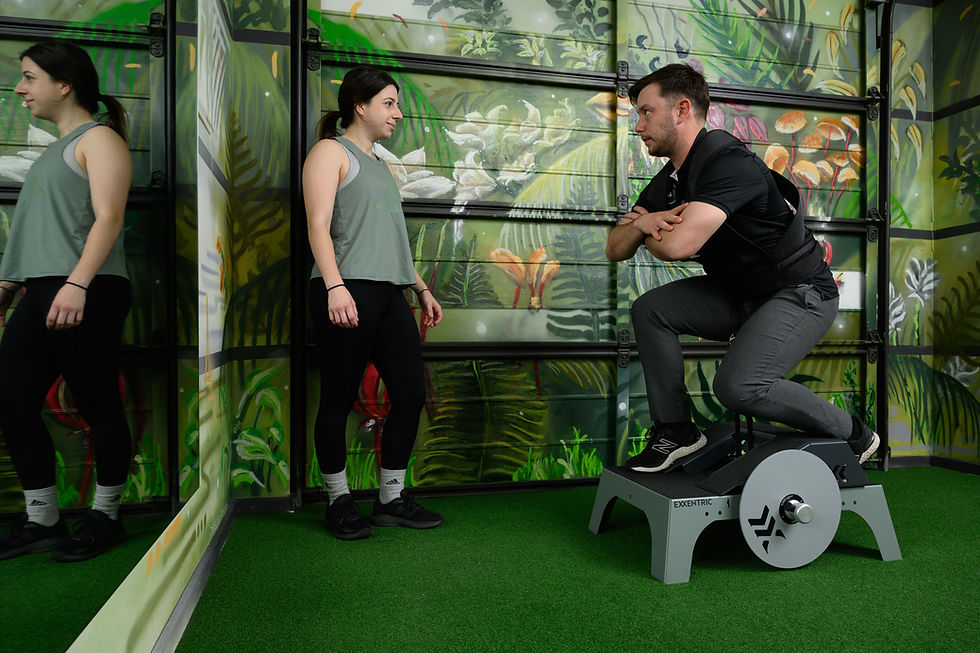Understanding Vestibular Hypofunction vs. Hyperfunction: What’s the Difference?
- tom44059
- Sep 3
- 3 min read

At Physio on Patterson, we often see patients experiencing dizziness, imbalance, or vertigo without a clear cause. Many of these symptoms are linked to disorders of the vestibular system—the intricate network within the inner ear and brain that helps control balance and eye movements.
Two common categories of vestibular disorders are vestibular hypofunction and vestibular hyperfunction. While they may sound similar, these conditions are quite distinct in how they affect the body and how we approach treatment. Here's what you need to know.
What Is the Vestibular System?
Before we dive into the differences, it's important to understand the basics. The vestibular system, located in the inner ear, helps you maintain your balance, posture, and spatial orientation. It works closely with your eyes, muscles, and brain to detect motion and respond accordingly.
When this system is not working properly, people can experience a range of symptoms such as dizziness, vertigo, unsteadiness, and nausea.
Vestibular Hypofunction
What Is It?
Vestibular hypofunction occurs when the vestibular system is underactive or not functioning at full capacity. This reduced function can affect one side (unilateral hypofunction) or both sides (bilateral hypofunction) of the inner ear.
Common Causes and Examples:
Vestibular Neuritis – An infection (usually viral) that inflames the vestibular nerve, leading to sudden dizziness and imbalance.
Labyrinthitis – Similar to neuritis, but includes hearing loss due to inner ear inflammation.
Age-related degeneration – As we age, the vestibular system can gradually decline.
Ototoxic medications – Certain antibiotics or chemotherapy drugs can damage inner ear function.
Ménière’s Disease (later stages) – Chronic fluid buildup in the inner ear can lead to reduced vestibular function over time.
Symptoms May Include:
Persistent unsteadiness
Difficulty walking in the dark or on uneven surfaces
Dizziness or vertigo with head movement
Nausea
Blurred vision with motion (oscillopsia)
Vestibular Hyperfunction
What Is It?
Vestibular hyperfunction refers to overactivity or abnormal excitation of the vestibular system. Essentially, the brain is receiving too much or conflicting information from the inner ear, leading to an exaggerated sense of motion or vertigo.
Common Causes and Examples:
Benign Paroxysmal Positional Vertigo (BPPV) – Dislodged crystals in the inner ear overstimulate the balance sensors during head movement, leading to brief but intense vertigo.
Vestibular migraines – A neurological condition that can cause the brain to misinterpret vestibular signals.
Superior canal dehiscence syndrome – A rare condition where a tiny hole in the bone overlying the inner ear leads to sound- or pressure-induced vertigo and imbalance.
Early stages of Ménière’s Disease – Characterised by sudden episodes of vertigo, often with hearing changes and tinnitus.
Symptoms May Include:
Sudden, spinning vertigo (often position-related)
Nausea or vomiting during episodes
Heightened sensitivity to head movements
Tinnitus or fullness in the ear
Sound- or pressure-induced dizziness (in rare cases)
How Physiotherapy Can Help
At Physio on Patterson, we are trained in vestibular physiotherapy, a targeted treatment approach that can significantly reduce symptoms and improve quality of life.
Our Approach Includes:
1. Comprehensive Assessment
Using specialised tests and clinical reasoning, our physiotherapists can determine whether your symptoms stem from vestibular hypofunction or hyperfunction. This may include:
Oculomotor testing (eye movement tracking)
Balance and gait assessment
Positional testing (such as the Dix-Hallpike for BPPV)
Motion sensitivity screening
2. Tailored Treatment Plans
Depending on your diagnosis, we create a personalised treatment plan which may include:
Vestibular rehabilitation exercises – To retrain the brain and body to adapt to vestibular deficits.
Canalith repositioning manoeuvres – For BPPV, techniques like the Epley manoeuvre can move displaced crystals back into place.
Balance and coordination training – Especially important for hypofunction cases to prevent falls and improve confidence.
Education and lifestyle advice – Managing triggers, modifying activities, and understanding your condition are key parts of recovery.
3. Ongoing Monitoring and Support
Vestibular conditions can fluctuate over time. Our team provides ongoing care, adjusting your program as needed to ensure the best outcomes.
Final Thoughts
Whether your vestibular system is underactive or overactive, the symptoms can be unsettling and disruptive. The good news is that most vestibular disorders are treatable—with the right diagnosis and expert care.
At Physio on Patterson, we’re committed to helping you regain your balance, stability, and confidence. If you’re experiencing dizziness, vertigo, or unexplained imbalance, don’t wait—reach out to book an assessment with our experienced vestibular physiotherapy team.
Need help with dizziness or vertigo? Contact us today to schedule a vestibular assessment and take the first step toward feeling steady again.





Comments